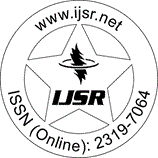Downloads: 14
India | Library Science | Volume 14 Issue 6, June 2025 | Pages: 163 - 167
RFID Technology in Libraries
Abstract: RFID (Radio Frequency Identification) technology is a cutting-edge tool transforming library operations. Utilizing electromagnetic fields, RFID systems automatically identify and track tags attached to objects, such as books and multimedia materials. This innovative technology is increasingly adopted by libraries worldwide to enhance efficiency, accuracy, and user satisfaction. One of the most significant advantages of RFID technology in libraries is the streamlining of check-in and check-out processes. Traditional barcode systems require a line-of-sight scan, often leading to time-consuming manual handling of each item. In contrast, RFID tags can be read from a distance, allowing multiple items to be processed simultaneously. This speeds up the borrowing and returning process, reducing wait times for patrons and freeing up staff for more specialized tasks. Librarians can perform rapid inventory checks using handheld RFID readers, which can scan entire shelves of books in minutes. Additionally, RFID tags help identify misplaced books, reducing the time spent searching for missing items and improving overall collection organization. Security is a critical concern for libraries, and RFID technology provides robust solutions to prevent unauthorized removal of materials. RFID-enabled security gates at library exits can detect active RFID tags on items, triggering an alarm if an attempt is made to leave the premises without proper check-out. Self Service kiosks equipped with RFID readers allow users to check out and return (vi) materials independently, fostering a sense of autonomy and convenience. This not only reduces queues and wait times but also allows library staff to focus on more complex inquiries and support services, enhancing the overall user experience. The integration of RFID technology in libraries offers valuable data analytics capabilities. RFID systems can track usage patterns, providing insights into the most borrowed materials, peak usage times, and user preferences. RFID technology represents a significant step forward in modernizing library management, ultimately enriching the role of libraries as vital community resources in the 21st century. In an era of rapid technological advancement, this book explores how RFID technology is reshaping libraries, enhancing operational efficiency, and improving user experiences.
Keywords: RFID Technology, OPAC, WEBPAC, Library CHAT-ROOMS, Library Websites
How to Cite?: Rukhsana Shawl, Dr. Satyandar Kumar Sharma, "RFID Technology in Libraries", Volume 14 Issue 6, June 2025, International Journal of Science and Research (IJSR), Pages: 163-167, https://www.ijsr.net/getabstract.php?paperid=SR25527112952, DOI: https://dx.doi.org/10.21275/SR25527112952
Rate This Article! View 1 Comments
